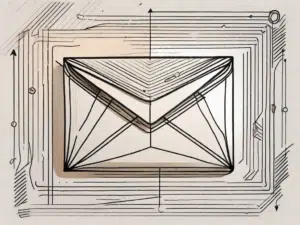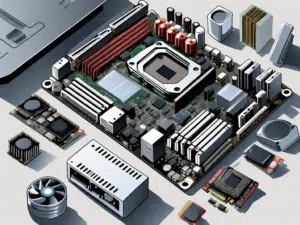Service-oriented architecture (SOA) is a concept that allows different software applications to work together using services. These services are self-contained, modular units that perform specific tasks and that other applications can access and use over a network.
Simply put, SOA is like a marketplace where applications can interact and exchange services. It provides a standardized way for different software components to communicate with each other, regardless of the programming languages used, platforms or technologies. This promotes interoperability, flexibility and reusability and makes it easier to develop and maintain complex software systems.
Challenge your technical knowledge
Are you ready to delve deep into the fascinating world of technology? In this comprehensive guide, we will explore the concept of service-oriented architecture (SOA) and its importance in the ever-evolving technology landscape.
Service-oriented architecture (SOA) is a software architecture style that allows different applications to communicate with each other as services. It provides a flexible and scalable approach to building complex systems by organizing software components into reusable services.
SOA enables interoperability between different software applications by defining a set of standards and protocols for communication. These services can be accessed and used by other applications, regardless of technology or Platform, on which they are built. This interoperability promotes integration and collaboration between different systems and leads to greater efficiency and flexibility.
Reusability is an important aspect of SOA because it allows companies to use existing services and components to develop new applications. By developing independent and self-contained services, they can be easily reused in different contexts, reducing development effort. This reusability also promotes consistency and standardization within the organization, resulting in better maintainability and cost efficiency.
How well do you know technology?
Before we start our journey, we should test your knowledge. Take a moment to answer the following questions:
- What is the purpose of service-oriented architecture?
- How does SOA enable interoperability between different software applications?
- Why is reusability an important aspect of SOA?
Take your time and we will provide the answers at the end of this guide.
Now that we have a basic understanding of SOA, let's delve deeper into its core principles and components. SOA is based on the concept of services, which are self-contained functional units that other applications can access and use. These services are designed to be independent and loosely coupled, meaning they can be developed, deployed and updated independently without affecting other services.
One of the key benefits of SOA is its ability to promote agility and flexibility in software development. By breaking complex systems down into smaller, modular services, companies can respond quickly to changing business needs. This modular approach also allows for easier scalability as services can be added or removed as needed without disrupting the entire system.
SOA not only promotes flexibility, but also increases the security and reliability of software applications. By encapsulating functionality into services, organizations can implement access controls and security measures at the service level, ensuring that sensitive data and operations are protected. In addition, the loose coupling between services reduces the impact of errors or changes in one service on the rest of the system, increasing the reliability of the overall system.
Another important aspect of SOA is the use of standardized protocols and interfaces for communication between services. This standardization enables seamless integration between different applications, regardless of the technologies or platforms on which they are built. It also enables the creation of service registries and repositories where companies can publish and discover available services, promoting reusability and collaboration.
Throughout the remainder of this guide, we will examine various real-world examples and case studies that demonstrate the practical applications and benefits of SOA. We will also discuss the challenges and considerations of implementing and managing SOA-based systems and provide you with valuable insights and best practices.
Unleash the power of technology
The world of technology is constantly evolving and it is important to stay up to date with the latest innovations. Let's explore some of the cutting-edge technologies shaping our future:
Exploring the latest technical innovations
From artificial intelligence to blockchain, the technology is revolutionizing every industry. Here are some key areas where breakthrough innovation is taking place:
- Artificial Intelligence (AI) and Machine Learning (ML)
- Internet of Things (IoT)
- Cloud-Computing
- Augmented reality (AR) and virtual reality (VR)
These technologies have the potential to transform the way we live, work and interact with the world around us.
Basic technical terminology
As you explore the world of technology, you will come across various terms and jargon that may seem overwhelming at first. Let's demystify some of the most common technical terms:
Demystifying common technical terms
Here are definitions for some important technical terms:
- API (application programming interface)
- An API is a set of rules and protocols that allow different software applications to communicate with each other.
- BACKEND
- The backend refers to the server side of an application where the business logic and data processing takes place.
- Frontend
- The frontend refers to the client side of an application that is responsible for presenting the user interface and interacting with the user.
Understanding these terms will help you navigate the complex world of technology with confidence.
Expand your technical vocabulary
Now that you're familiar with some common technical terms, let's delve deeper into the realm of technical jargon:
Technical jargon you need to know
Here are some important terms that every technology enthusiast should know:
- Big Data
- Native cloud
- DevOps
- Agile development
These terms are used frequently in the tech industry, and understanding them will help you navigate tech literature and conversations.
The ultimate tech glossary
Building on the technical vocabulary we have already covered, we would like to provide you with a comprehensive guide to technical terminology:
A comprehensive guide to technical terminology
From APIs to UX/UI, this glossary covers a wide range of technical terms:
- RESTful API
- virtualization
- Encryption
- Responsive design
- Machine vision
With this comprehensive technical glossary, you'll be well equipped to navigate the vast world of technology.
Navigating the world of computers and technology
Understanding computers and the fundamentals of computer science is essential in today's digital age. Some important topics are covered below:
Understanding of the basics of computer science
Computer science is the study of computers and computing systems. It covers various areas such as algorithms, data structures, programming languages and much more. Here are a few basic concepts:
- Binary code
- Operating Systems
- Computer networks
- Software development
Mastering these basics will give you a solid foundation to further explore the world of technology.
Exploring the different types of computer hardware
Computer hardware refers to the physical components that make up a computer system. Here are some common types of computer hardware:
- Central Processing Unit (CPU)
- Random Access Memory (RAM)
- Hard disk drive (HDD)
- graphics processing unit (GPU)
Understanding computer hardware will give you insight into how computers work and the role they play in various fields.
The Dictionary of Technical Terms: Your Favorite Resource
As you venture into the world of technology, it is essential to have a handy reference guide for the vast collection of technical terms. The dictionary of technical terms introduces itself:
A practical reference for technology enthusiasts
The Technical Terms Dictionary is your first stop for understanding and refreshing your memory on technical terms. Whether you are a beginner or an experienced tech enthusiast, this dictionary has everything you need.
With over thousands of terms, from software development to cybersecurity, you can quickly look up any technical term and get a clear picture of its meaning and usage.
Conclusion
In this comprehensive guide, we explored the world of service-oriented architecture (SOA) and its importance in the ever-evolving technology landscape. We looked at the latest technical innovations, the most important technical terminology and the basics of computer science. With this knowledge, you are now better equipped to navigate the world of computers and technology.
Remember the tough questions we asked at the beginning of this guide? Here are the answers:
- The purpose of service-oriented architecture is to allow different software applications to work together using services.
- SOA enables interoperability between different software applications by providing a standardized way for communication between them.
- Reusability is an important aspect of SOA because it allows services to be consumed by multiple applications, eliminating duplication of effort and improving efficiency.
Expand your technical knowledge, explore new technologies and stay curious - the world of technology is constantly evolving and there is always more to learn.





